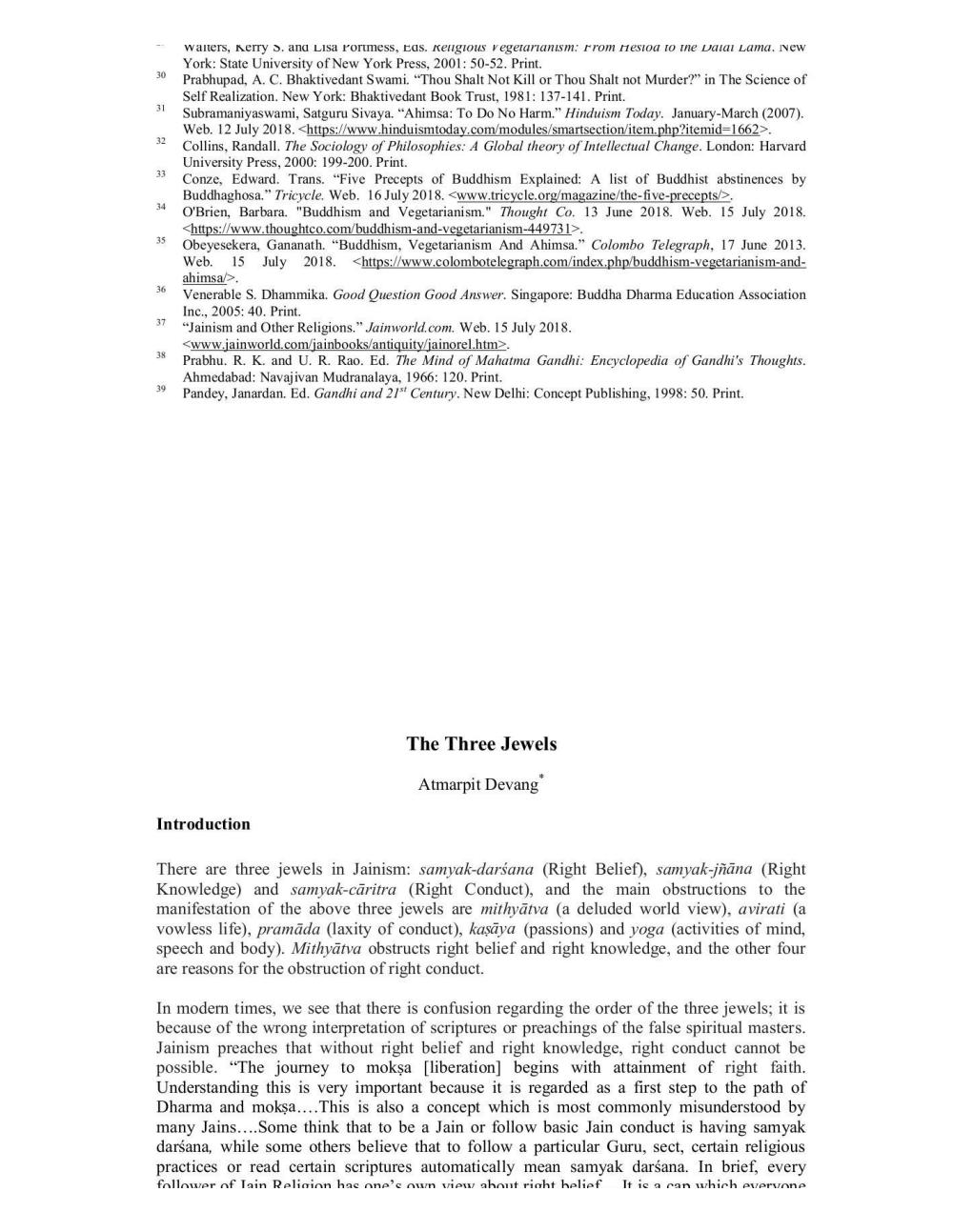________________
30
31
32
2013
33
34
35
36
37
38
39
waiters, Kerry S. and Lisa Portmess, Eas. Kengious vegetarianism: From Hesiod to the Dalai Lama. New York: State University of New York Press, 2001: 50-52. Print.
Prabhupad, A. C. Bhaktivedant Swami. "Thou Shalt Not Kill or Thou Shalt not Murder?" in The Science of Self Realization. New York: Bhaktivedant Book Trust, 1981: 137-141. Print.
Subramaniyaswami, Satguru Sivaya. "Ahimsa: To Do No Harm." Hinduism Today. January-March (2007). Web. 12 July 2018. <https://www.hinduismtoday.com/modules/smartsection/item.php?itemid=1662>. Collins, Randall. The Sociology of Philosophies: A Global theory of Intellectual Change. London: Harvard University Press, 2000: 199-200. Print.
Conze, Edward. Trans. "Five Precepts of Buddhism Explained: A list of Buddhist abstinences by Buddhaghosa." Tricycle. Web. 16 July 2018. <www.tricycle.org/magazine/the-five-precepts/>.
O'Brien, Barbara. "Buddhism and Vegetarianism." Thought Co. 13 June 2018. Web. 15 July 2018. <https://www.thoughtco.com/buddhism-and-vegetarianism-449731>.
Obeyesekera, Gananath. "Buddhism, Vegetarianism And Ahimsa." Colombo Telegraph, 17 June 2013. Web. 15 July 2018. <https://www.colombotelegraph.com/index.php/buddhism-vegetarianism-andahimsa/>.
Venerable S. Dhammika. Good Question Good Answer. Singapore: Buddha Dharma Education Association Inc., 2005: 40. Print.
"Jainism and Other Religions." Jainworld.com. Web. 15 July 2018.
<www.jainworld.com/jainbooks/antiquity/jainorel.htm>.
Prabhu. R. K. and U. R. Rao. Ed. The Mind of Mahatma Gandhi: Encyclopedia of Gandhi's Thoughts. Ahmedabad: Navajivan Mudranalaya, 1966: 120. Print.
Pandey, Janardan. Ed. Gandhi and 21st Century. New Delhi: Concept Publishing, 1998: 50. Print.
Introduction
The Three Jewels
Atmarpit Devang
There are three jewels in Jainism: samyak-darśana (Right Belief), samyak-jñāna (Right Knowledge) and samyak-caritra (Right Conduct), and the main obstructions to the manifestation of the above three jewels are mithyatva (a deluded world view), avirati (a vowless life), pramada (laxity of conduct), kaṣaya (passions) and yoga (activities of mind, speech and body). Mithyātva obstructs right belief and right knowledge, and the other four are reasons for the obstruction of right conduct.
In modern times, we see that there is confusion regarding the order of the three jewels; it is because of the wrong interpretation of scriptures or preachings of the false spiritual masters. Jainism preaches that without right belief and right knowledge, right conduct cannot be possible. "The journey to mokṣa [liberation] begins with attainment of right faith. Understanding this is very important because it is regarded as a first step to the path of Dharma and mokṣa....This is also a concept which is most commonly misunderstood by many Jains....Some think that to be a Jain or follow basic Jain conduct is having samyak darśana, while some others believe that to follow a particular Guru, sect, certain religious practices or read certain scriptures automatically mean samyak darśana. In brief, every follower of lain Religion hac one's own view about right helief It is a can which everyone




